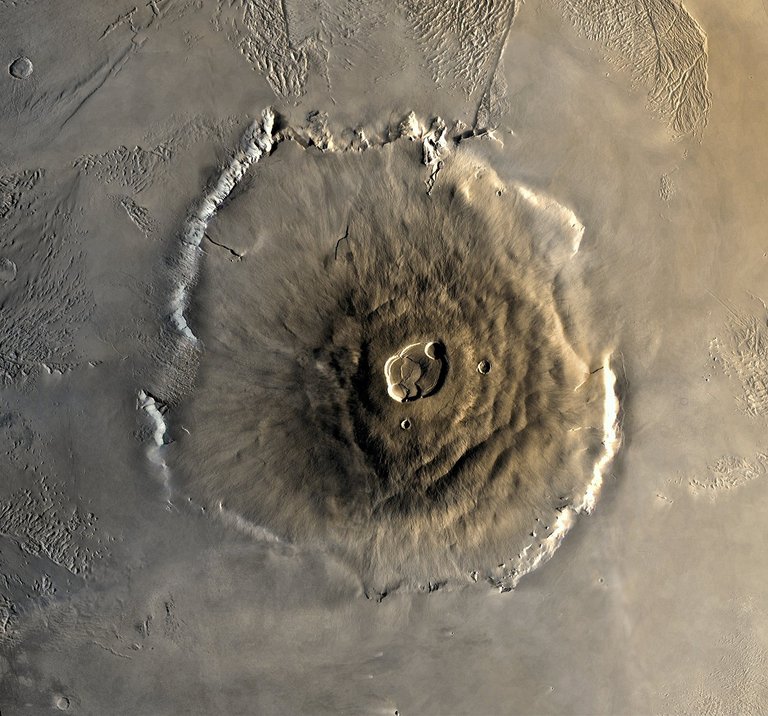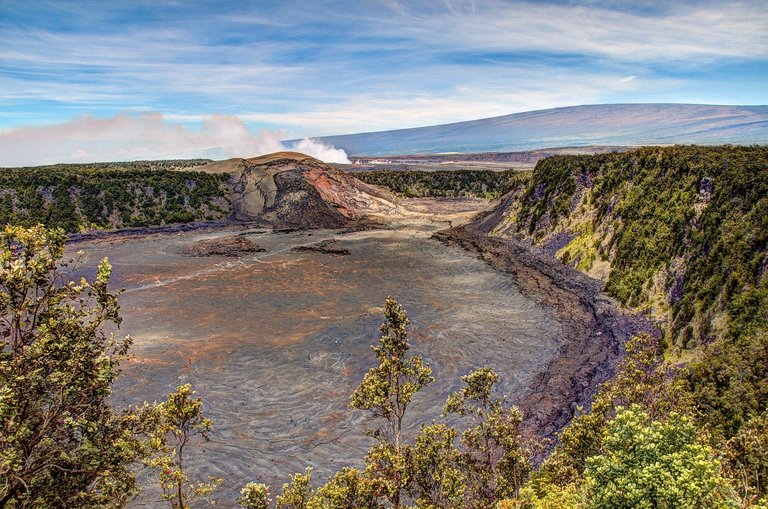Located on the planet Mars, Olympus Mons is the largest known volcano in our solar system. A shield volcano, characterized by its gently sloping shape resembling a shield belonging to a 17th Century warrior. Olympus Mons stands at an impressive 27 km (17 mi) high, approximately three times the height of Mount Everest. Its basal diameter spans an astonishing 600 km (373 mi), making it not only the tallest but shoving it to the ranks of the largest volcanoes in the solar system.

The formation of Olympus Mons is a fascinating story that has captivated scientists and astronomers for decades. It is believed to have formed over a period of approximately 100 millions years, with some estimates suggesting it may have started forming as far back as 2 billion years ago. The volcano's growth is thought to have been incredibly slow, with estimates suggesting it took around 100 million years to reach its current size. This slow growth rate is attributed to the eruption of highly fluid lava flows, which traveled long distances, creating the volcano's distinctive shield shape.
One of the most intriguing aspects of Olympus Mons is its unique shape. The volcano's slopes become progressively steeper towards the summit, creating a distinctive "shield" shape. This shape is similar to that of the shield volcanoes found in Hawaii like the MAUNA LOA and the MAUNA KEA, suggesting that similar geological processes may have shaped both Martian and terrestrial volcanoes. Olympus Mons' shape also provides valuable insights into the volcano's internal structure and composition.

The volcano's massive size and weight have caused the Martian crust to deform, creating a depression in the surrounding terrain that's about 1 km deep. This depression, known as the "Olympus Mons footprint," is a testament to the volcano's oppressing size and weight. Olympus Mons has also produced massive amounts of volcanic ash, which has been deposited across the Martian surface, creating a layer of ash that can be up to 10 meters thick in some areas.
Olympus Mons provides valuable insights into Mars' geological past, including the planet's volcanic history and the movement of tectonic plates. The volcano's eruptions may have played a significant role in shaping Mars' climate, potentially releasing large amounts of greenhouse gases into the atmosphere. Olympus Mons may have also hosted hydrothermal activity in the past, which could have provided a habitable environment for life on Mars.
Olympus Mons is truly a sight to behold, its a Martian volcano that continues to fascinate scientists and astronomers. Its massive size, unique shape, and slow growth rate make it a truly remarkable feature of the Martian landscape. As we continue to explore and study Olympus Mons, we may uncover even more secrets about Mars' geological past and the potential for life on the Red Planet.

Congratulations @equinoxdsupreme! You have completed the following achievement on the Hive blockchain And have been rewarded with New badge(s)
Your next target is to reach 30 posts.
You can view your badges on your board and compare yourself to others in the Ranking
If you no longer want to receive notifications, reply to this comment with the word
STOPCheck out our last posts: